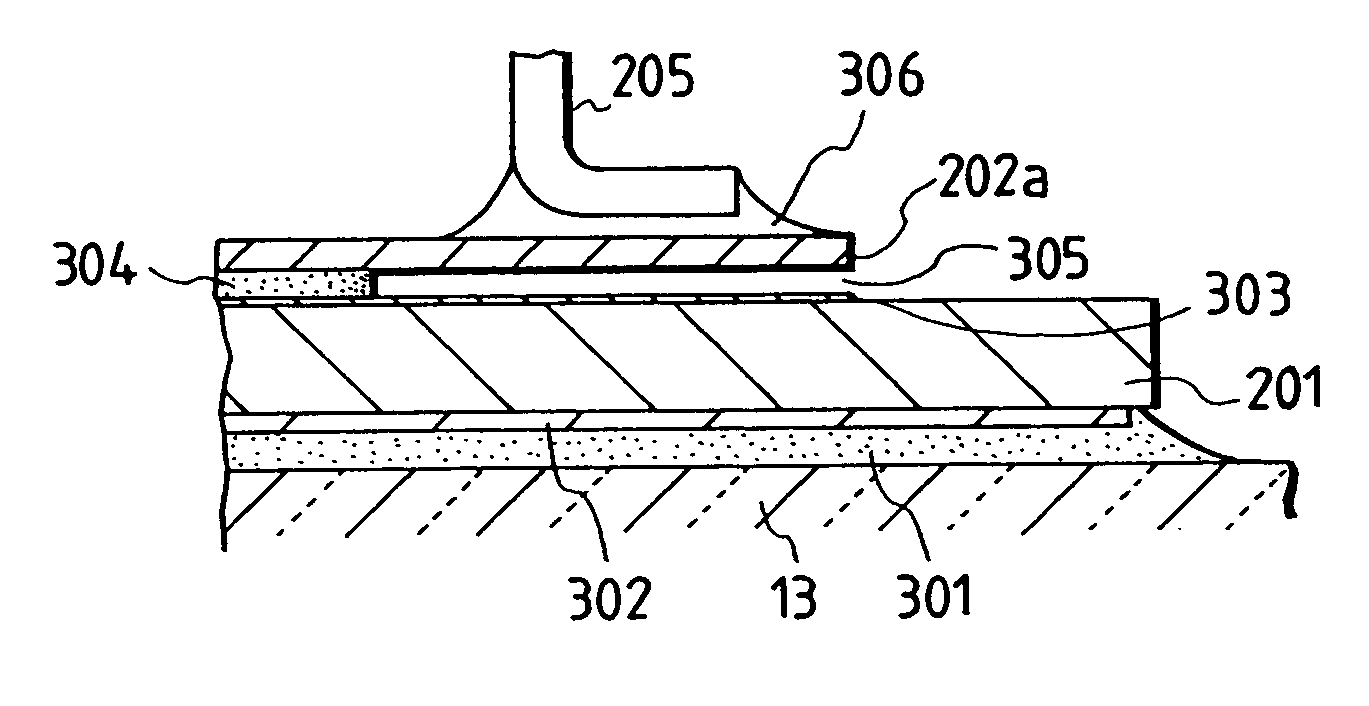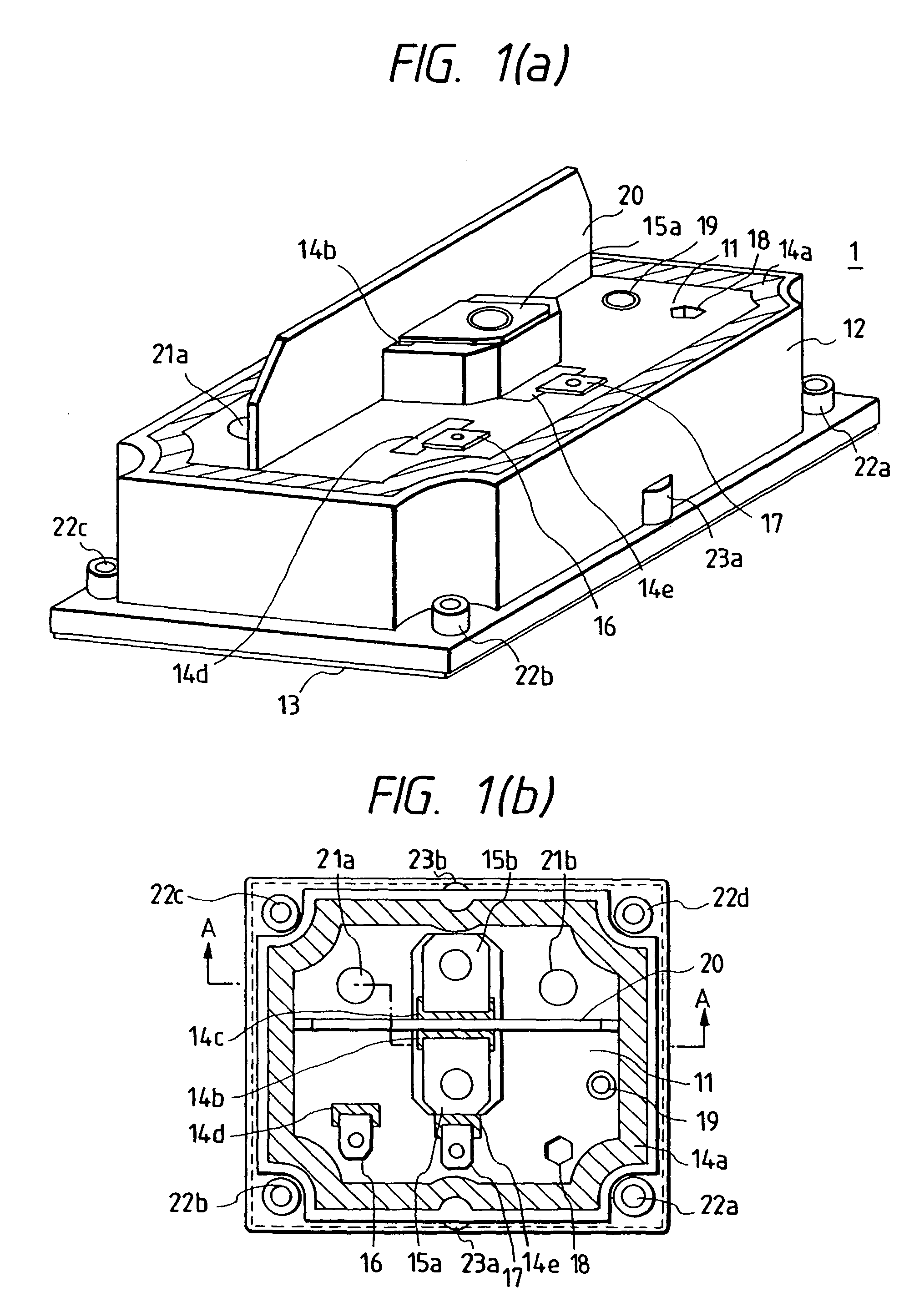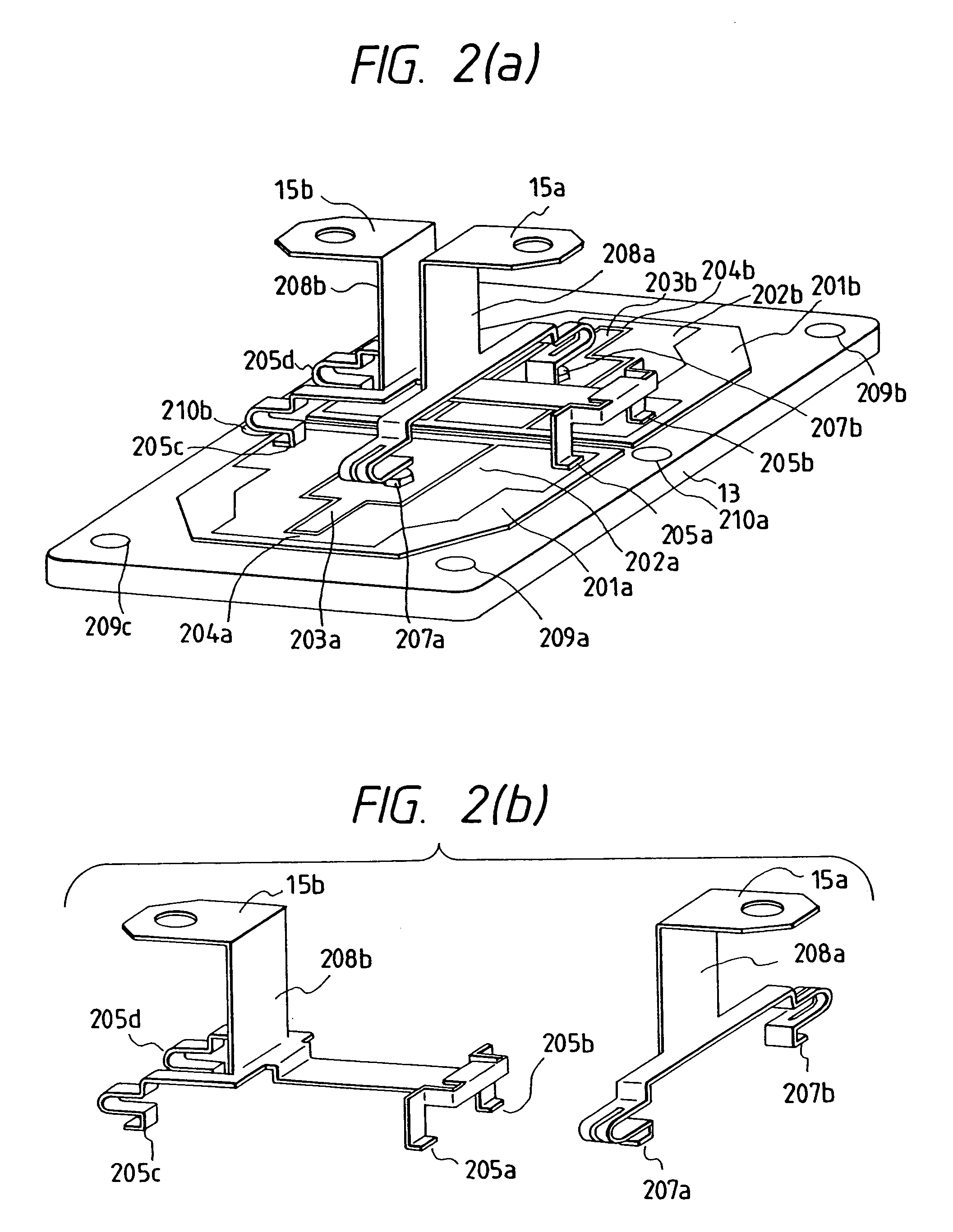Circuit board
a technology of circuit board and semiconductor, applied in the direction of semiconductor/solid-state device details, printed circuit details, solid-state devices, etc., can solve the problems of large problems, increased stress under the terminal, and cracks in ceramics, so as to prolong the life time of thermal fatigue, reduce the deformation of the fixing bolt, and reduce the strain of the solder
- Summary
- Abstract
- Description
- Claims
- Application Information
AI Technical Summary
Benefits of technology
Problems solved by technology
Method used
Image
Examples
first embodiment
[0117]Firstly, a semiconductor module according to the present invention will be described, referring to FIG. 18 to FIG. 24. The semiconductor module of this embodiment mounts three diode elements 101, 102, 103 of same kind and same size as shown in FIG. 18. Each of the diode elements 101, 102, 103 is square-plate-shaped, and on the top surface of the diode element there is an anode electrode (input electrode) through which current flows in from the external, and on the bottom surface there is a cathode electrode (output electrode) through which current floes out to the external.
[0118]The semiconductor module comprises, as shown in FIG. 18 to FIG. 20, the three diodes 101, 102, 103 as described above, a metallic supporting board 114, a rectangular insulator substrate 106 provided on the supporting board 114, an anode side conductor pattern 105 electrically connected to the anode electrodes on the top surfaces of the diode elements 101, 102, 103 in parallel, a cathode side conductor ...
second embodiment
[0135]a semiconductor module according to the present invention will be described below, referring to FIG. 25 and FIG. 26.
[0136]The semiconductor module in this embodiment comprises two sets of insulator substrates each of which mounts three IGBT elements and one diode element as shown in FIG. 25. The IGBT element is square plate-shaped, having an emitter electrode (input electrode) and a gate electrode (control electrode) on the top surface, and a collector electrode (output electrode) on the bottom surface.
[0137]On a metallic supporting board 114, two insulator substrates 106, 106 made of aluminum nitride are arranged symmetrically in regard to the center line 622 of the metallic supporting board 114. On one of the insulator substrate 106, conductor patterns 610, 611, 614 made of copper are formed. Among the conductor patterns 610, 611, 614, on the collector side conductor pattern 610, the IGBT elements 601, 602, 603 and the diode element 607 are arranged and a collector side conn...
fourth embodiment
[0150]a semiconductor module is an IGBT module mounting two IGBT elements 601, 603 and one diode element 607 as shown in FIG. 29. On a metallic supporting board 114, an insulator substrate 106 is arranged by putting its center on the center line 622. On the insulator substrate 106, a collector side conductor pattern 610, an emitter side conductor pattern 614 and a gate side conductor pattern 611 are formed so that the positions and the shapes are symmetrical in regard to the center line 622. On the collector side conductor pattern 610, the IGBT elements 601, 603 and the diode element 607 are arranged and a collector side connecting terminal 612 is bonded. On the gate side conductor pattern 611, two gate resistor elements 609, 609 are arranged and a gate side terminal 620 is bonded. On the emitter side conductor pattern 614, an emitter side connecting terminal 616 and an emitter auxiliary connecting terminal 618 are bonded. The emitter auxiliary connecting terminal 618 has a leg comm...
PUM
 Login to View More
Login to View More Abstract
Description
Claims
Application Information
 Login to View More
Login to View More - R&D
- Intellectual Property
- Life Sciences
- Materials
- Tech Scout
- Unparalleled Data Quality
- Higher Quality Content
- 60% Fewer Hallucinations
Browse by: Latest US Patents, China's latest patents, Technical Efficacy Thesaurus, Application Domain, Technology Topic, Popular Technical Reports.
© 2025 PatSnap. All rights reserved.Legal|Privacy policy|Modern Slavery Act Transparency Statement|Sitemap|About US| Contact US: help@patsnap.com



